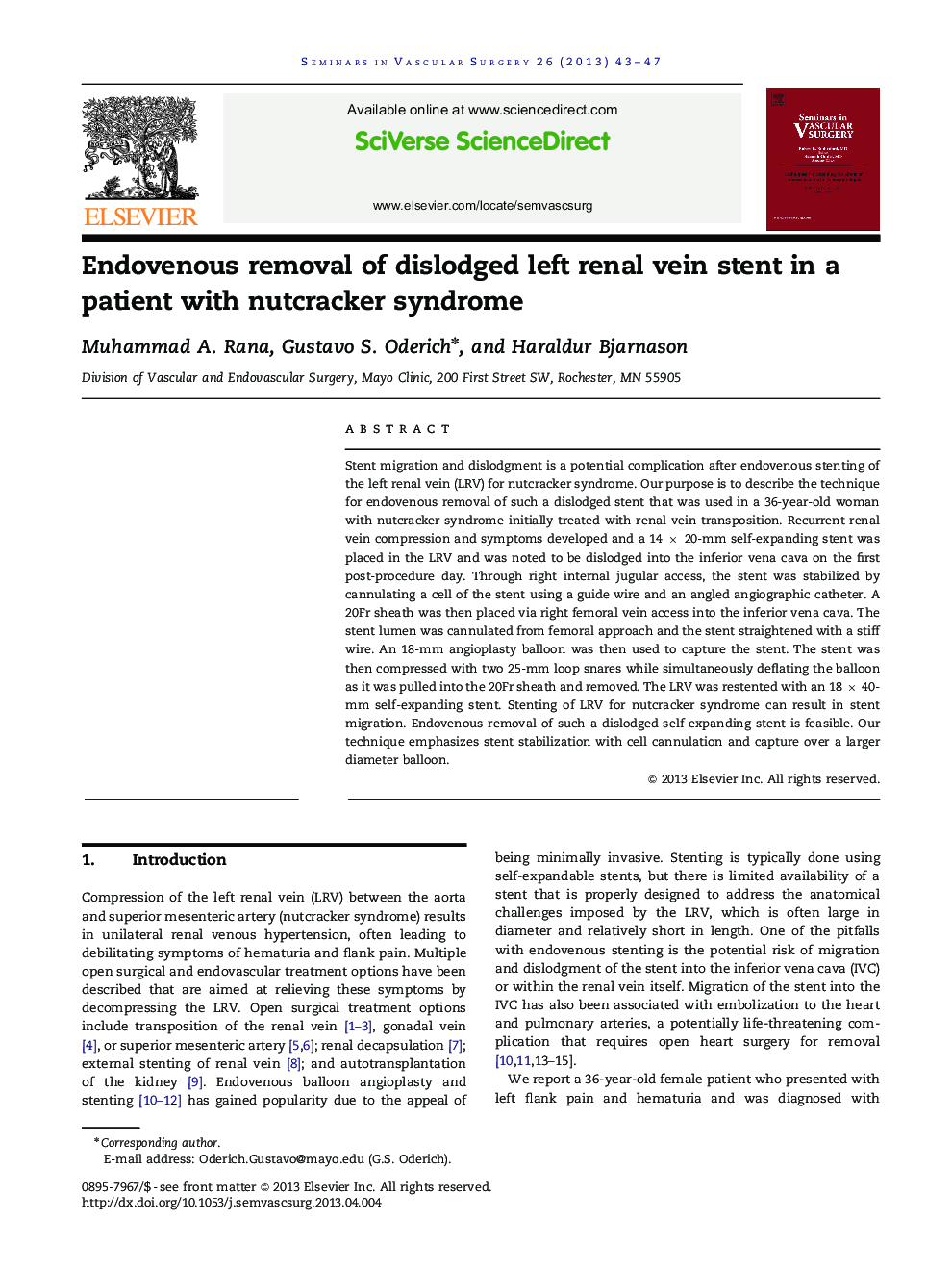| Article ID | Journal | Published Year | Pages | File Type |
|---|---|---|---|---|
| 3026344 | Seminars in Vascular Surgery | 2013 | 5 Pages |
Stent migration and dislodgment is a potential complication after endovenous stenting of the left renal vein (LRV) for nutcracker syndrome. Our purpose is to describe the technique for endovenous removal of such a dislodged stent that was used in a 36-year-old woman with nutcracker syndrome initially treated with renal vein transposition. Recurrent renal vein compression and symptoms developed and a 14 × 20-mm self-expanding stent was placed in the LRV and was noted to be dislodged into the inferior vena cava on the first post-procedure day. Through right internal jugular access, the stent was stabilized by cannulating a cell of the stent using a guide wire and an angled angiographic catheter. A 20Fr sheath was then placed via right femoral vein access into the inferior vena cava. The stent lumen was cannulated from femoral approach and the stent straightened with a stiff wire. An 18-mm angioplasty balloon was then used to capture the stent. The stent was then compressed with two 25-mm loop snares while simultaneously deflating the balloon as it was pulled into the 20Fr sheath and removed. The LRV was restented with an 18 × 40-mm self-expanding stent. Stenting of LRV for nutcracker syndrome can result in stent migration. Endovenous removal of such a dislodged self-expanding stent is feasible. Our technique emphasizes stent stabilization with cell cannulation and capture over a larger diameter balloon.
